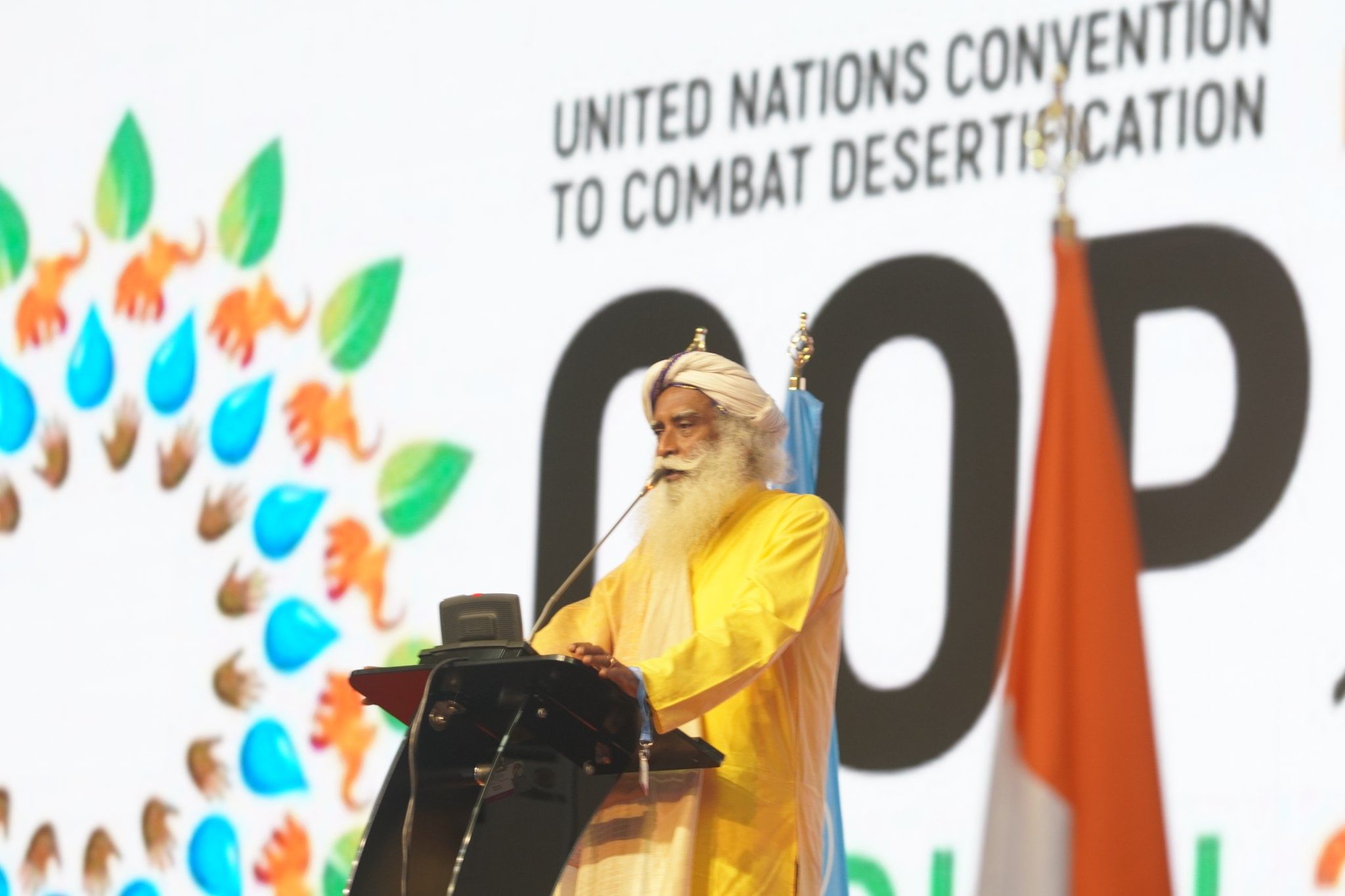The Save Soil Movement’s Solution to Global Agricultural Land Degradation – Presented at COP15
Sadhguru, in his address at the UNCCD COP15, stressed the need for a single-pointed focus to Save Soil and recommended an implementable three-pronged strategy to revive soil organic content. Here is a summary of the address.

To Save Soil at large scale we need to shape a deep-rooted People’s movement. Notwithstanding the complex nature of the ecological problem facing us, a successful People’s movement can be created only if we can distill the remedial action into just one single-minded focus that is articulated in a succinct and simple way. Our history of ecological effort shows very few unequivocal successes - largely because we failed to convert complex scientific arguments into easy to understand simple actions. The Montreal protocol of 1987 is often hailed as the single most successful international agreement to date - and that happened because there was a singular focus on doing just one thing - halting the depletion of the ozone layer.
In much the same way, there are many scientific nuances on how to handle the problem of land degradation in different types of soil conditions, in various agro-climatic zones, and in the differing contexts of cultural and economic traditions. It is nevertheless possible to distill out one overarching objective - which is to ensure that there is a minimum of 3-6% organic content in agricultural Soil. This would make our Soil vibrantly living, and sustainably thriving across all agricultural lands.
This overarching objective of ensuring a minimum 3-6% of organic content for agricultural Soil can in turn be achieved with a pragmatic three-pronged strategy:
- We need to make it aspirational for farmers to achieve the minimum threshold of 3-6% organic content by providing attractive incentives for getting to this threshold. Such incentives would create an aspirational race amongst farmers. It should be noted that there should be a phased program of implementation over a number of years – with the first phase being that of providing inspiration, followed by a second phase of providing incentives, and eventually having a third phase with some appropriate disincentives.
- We need to facilitate carbon credit incentives for farmers. The current processes for farmers to avail of carbon credit benefits are far too complex - and therefore need significant simplification.
- We need to develop a mark of superior quality for food grown from Soils that have the target 3-6% organic content level. Alongside doing this, we should also clearly articulate the various health, nutritional, and preventive health benefits of consuming such foods. As a result of this initiative, people would be more healthy, more productive, and more resilient – thereby leading to gains in man-days, and a lower stress on our health care systems. It is therefore evident that such a mark of superior quality food would have far more meaning than the current system of just trying to distinguish between so called ‘organic’ produce from ‘non-organic’ one.
Time is running out. But fortunately we know what to do. With the development of appropriate Government policies, we can turn the clock back on the impending extinction of Soil. To facilitate this task of rapid Government policy evolution across the world, the Save Soil Movement is creating a handbook of recommendations for every one of the 193 countries. More details can be obtained from the movement’s website at Savesoil.org.
Subscribe


